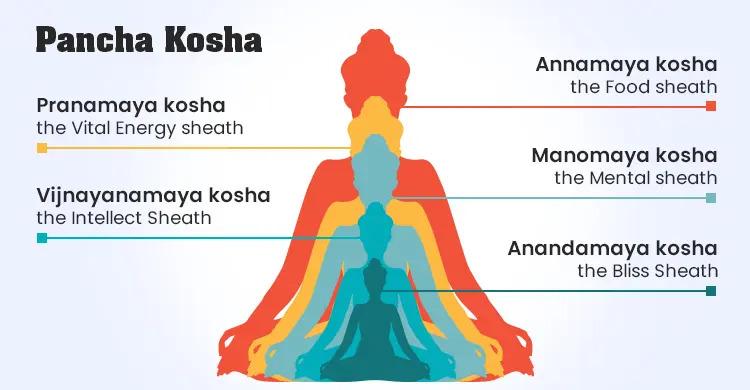The Panca-kosha Framework
Introduction
Here we will explore the Panca-kosha framework in Indian psychology, a model for understanding the multi-layered nature of the human being.
Understanding the Panca-kosha Framework
The Panca-kosha framework describes five sheaths or layers that constitute the human being:
- Annamaya Kosha (Food Sheath): The outermost layer, representing the physical body made up of food.
- Pranamaya Kosha (Vital Air Sheath): The energy body, responsible for various physiological functions like breathing, digestion, and circulation.
- Manomaya Kosha (Mental Sheath): The layer of the mind, including thoughts, emotions, and perceptions.
- Vijnanamaya Kosha (Wisdom Sheath): The layer of intellect and intuition, responsible for decision-making and higher cognitive functions.
- Anandamaya Kosha (Bliss Sheath): The innermost layer, representing the experience of pure joy and bliss.
Understanding Consciousness
The self, or consciousness, is considered to be beyond these five sheaths, the witness to all experiences and actions. It is the true nature of the individual, distinct from the ever-changing mind and body.
Mistaken Identity
People often mistake themselves for their physical body or their thoughts and emotions. However, the Panca-kosha framework suggests that the true self is beyond these layers.
Experiencing the True Self
The true self cannot be captured by language or intellect but can be experienced through various practices like meditation and self-inquiry.
Conclusion
The Panca-kosha framework offers a comprehensive understanding of the multi-layered nature of the human being, emphasizing the distinction between the true self and the ever-changing mind and body.

